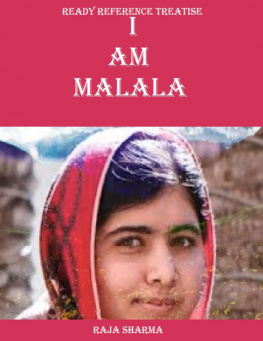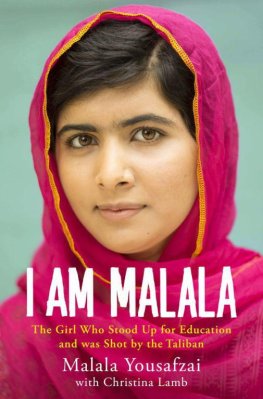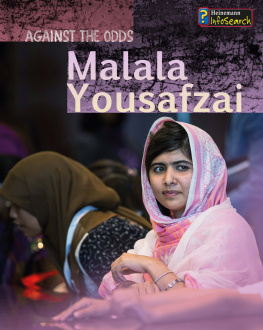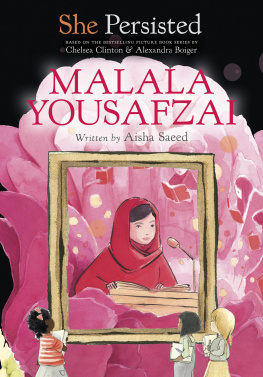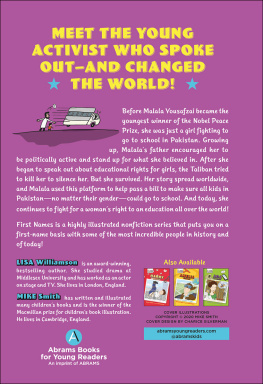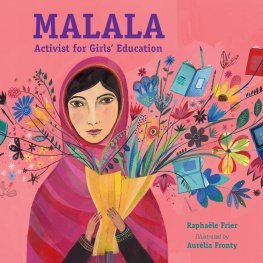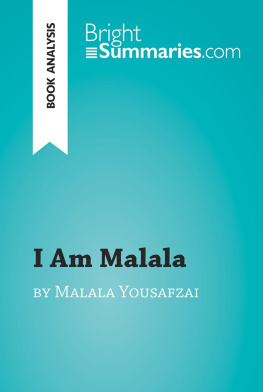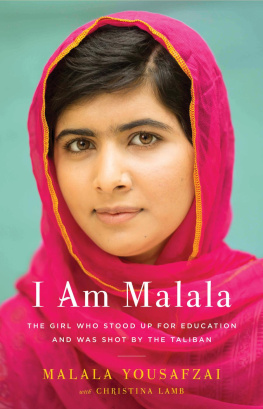ReadyReference Treatise: I am Malala
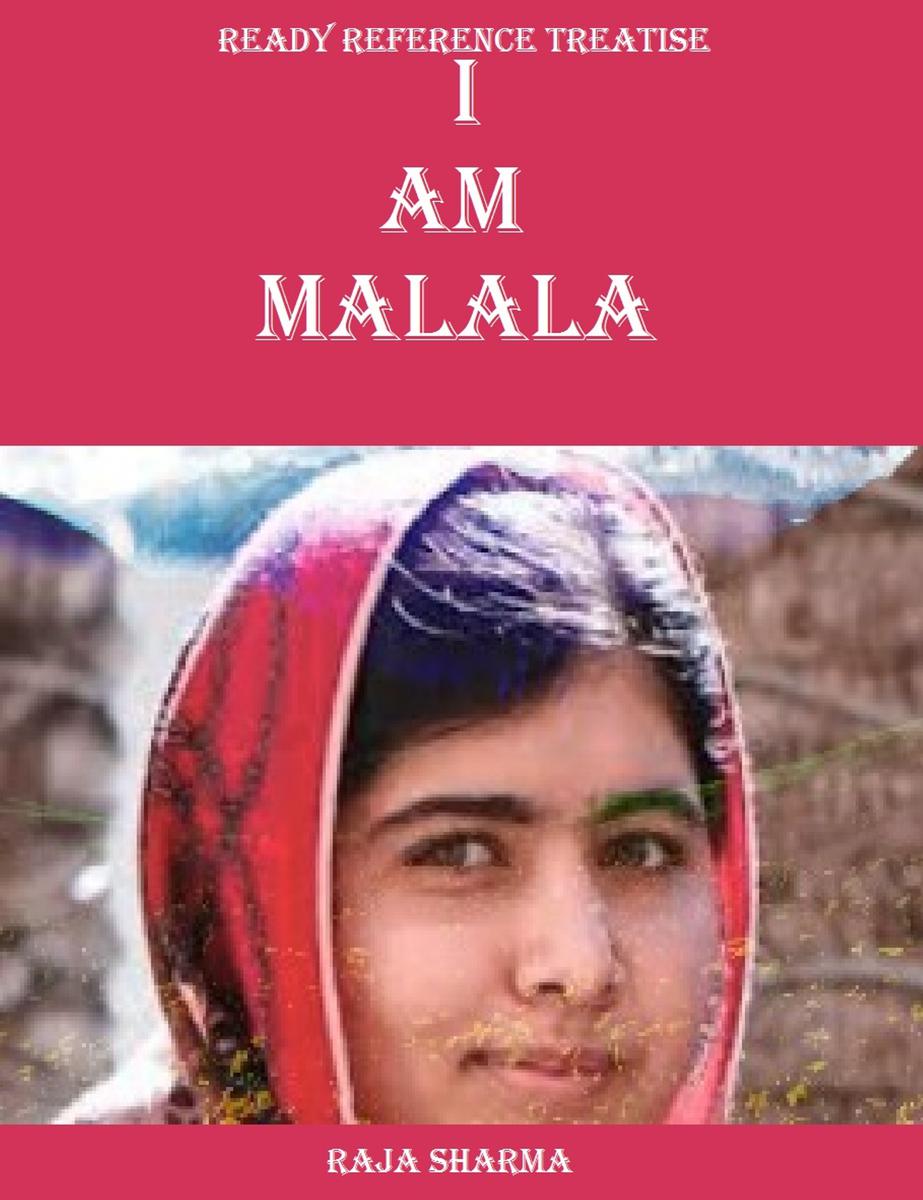
Copyright
ReadyReference Treatise: I am Malala
RajaSharma
Copyright@2016 Raja Sharma
Smashwords Edition
Allrights reserved
ChapterOne: Introduction
"I amMalala" by Malala Yousafzai and Christina Lamb was first publishedon 8th October, 2013. It is Malala Yousafzai'sautobiography.
ChristinaLamb helped the author write the book, and then she reviewed thebook. The book was also made into a movie called "He Named MeMalala."
Both thebook and movie were successful and the author received variouspositive reviews.
Theauthor, Malala Yousafzai, was born on 12th July 1997 in the SwatDistrict of Pakistan. The district is in the North-Western KhyberPakhtunkhwa province of Pakistan.
Malalawas born into a Sunni Muslim family of Pashtun ethnicity. Malalameans grief-stricken in their local language. She was named aftera famous Pashtun poet and warrior woman from Southern Afghanistan.That poet was called Malalai of Maiwand.
Yousafzai, her last name, comes from a large Pashtun tribalconfederation in Swat Valley in Pakistan. Malala grew up in thatregion. Her parents had their house in Mingora. Malala lived withher parents, Ziauddin and Tok Pekai, her two younger brothers,Khushal and Atal, and their two pet chickens.
Malalaspeaks Pashto, English, and Urdu fluently. Her father took theresponsibility of her education in her childhood. He would teachher with complete dedication. Her father is a poet and the owner ofa school. He is also an educational activist.
Ziauddin,Malalas father, has a chain of private schools and they are calledKhushal Public School.
Duringone interview, Malala once told the interviewer that she wanted tobecome a doctor, but her father encouraged her to become apolitician.
Herfather called her something entirely special. She was allowed tostay up at night and talk about politics. She often talked with herfather about politics after her two younger brothers had been sentto bed in another room.
In themonth of September 2008, Malala spoke for education rights for thefirst time. She was with her father who had brought her to speak atthe local press club. During her speech, she vehemently asked theaudience how the Taliban dared take away her basic right toeducation.
Herspeech was much publicized and most of the newspapers across thecountry published it. It was shown on several television channelsin the Swat district and other regions.
In thefollowing year, i. e. 2009, she started as a trainee and thenbecame a peer educator in the institute for War and PeaceReportings Open Minds Pakistan youth programme. That instituteencouraged the young students at schools to get engaged inconstructive discussions on social issues. They were told to usethe tools of journalism, public debates, and dialogue.
Malalastarted a blog under a pseudonym for the BBC Urdu telling the worldabout her life under Taliban occupation. She tried to tell theworld how the Taliban were trying to take control of the SwatValley. She presented her views on promoting education for girls inthe Swat Valley.
The nextyear, Adam B. Ellick made a documentary on her life for New YorkTimes. People began to talk about that girl named Malala. She beganto appear in interviews in print and on television. Desmond Tutu,the South African activist, nominated Malala for the InternationalChildrens Peace Prize.
October9th in 2012 was like any other day for Malala. She took her schoolbus from her home. Suddenly, a gunman entered the bus and asked forher by her name. When he found her in the bus, he pointed his gunat her and fired three shots. One of the bullets penetrated herforehead and entered her shoulder.
She fellsunconscious and remained in a very critical condition for severalhours. When her condition became a little better, she was sent tothe Queen Elizabeth Hospital in Birmingham, England, for herintensive rehabilitation.
FiftyMuslim clerics issued a Fatwa on 12th of October against the peoplewho had tried to kill Malala. The Taliban took the responsibilityand they reiterated their intent to kill her and her father,Ziauddin Yousafzai.
Supportbegan to come from across the world for Malala who was fighting forher life in an English hospital in England. Several members of theparliaments in different countries raised Malalas issue in theirrespective parliaments. Eventually, Pakistan also felt the need toratify Pakistans first Right to Education Bill in thecountry.
The mediain the Western world and particularly in the United States began togive more attention to Malala. She was featured as one of The 100Most Influential People in the World by Time Magazine in their2013, 2014, and 2015 issues.
Pakistangovernment awarded her Pakistans first National Youth Peace Prize.She also received the 2013 Sakharov Prize.
In July2013, Malala spoke at the headquarters of the United Nations. Shecalled for worldwide access to education.
In themonth of October, the Government of Canada announced that they wereintending to confer Honorary Canadian citizenship upon MalalaYousafzai.
Malalawas nominated for the World Childrens Prize in Sweden in February2014. She was fighting for the rights of children and women, butshe never described herself as a feminist.
Eventually, during an interview in 2015, Malala told EmmaWatson that she was ready to call herself a feminist after hearingEmma Watsons speech at the United Nations launching for HeForShecampaign.
TheUniversity of Kings College in Halifax, Nova Scotia, granted anHonorary Doctorate to Malala in May 2014.
Eventually, she was awarded the 2014 Nobel Peace Prize alongwith Kailash Satyarthi, for their fight against the suppressedchildren and young people around the world.
Malalawas only seventeen when she was awarded the Nobel Prize. She is theyoungest Nobel Prize laureate.
Malalahas been studying at all-girls Edgbaston High School since March2013. She is an excellent student, as reported by her teachers ather school.
ChapterTwo: Plot Overview
Malalamentions at the beginning of her memoir that education was alwaysof supreme value for her and her parents. Living in Swat Valley inPakistan, infested by the torturing and murderous Taliban, it wasvery difficult for a girl like Malala to pursue her goals in thefield of education.
Malalaspent most of her childhood in and around school as her fatherowned a school, in fact a chain of school in the following years.She began to realize the importance of education from young age.Khushal and Atal are her two younger brothers.
Malalalived with her parents and her brothers in the city of Mingora inSwat Valley. It is the largest city in the valley. In the firstpart of her childhood, life was quite easy for her. Her parents hadnot much money at first, but when her fathers school began to dowell, their financial hardships were over.
Whilestudying at school, she was always at the top of her class. Moniba,her best friend, was the only one to contest her. Malka e Noor wasMalalas rival in the class. After the nine/eleven attacks, thingsbegan to change rapidly in Pakistan. The international reputationof the country was in uncertainty as power continued to shift fromone party to another party or to the army.
Duringher childhood, one autumn, a huge earthquake hit the Swat Valley.The beautiful valley was almost devastated. Thousands of peopledied and suffering people were left everywhere.
Thingschanged drastically after the entry of the Taliban into SwatValley. The Taliban were an Islamic fundamentalist group thatwanted to implement their brutal version of Sharia law in thatregion. Fazlullah was the leader of the Taliban. Since he was acharismatic leader, many people began to follow the strict lawsintroduced by him.

